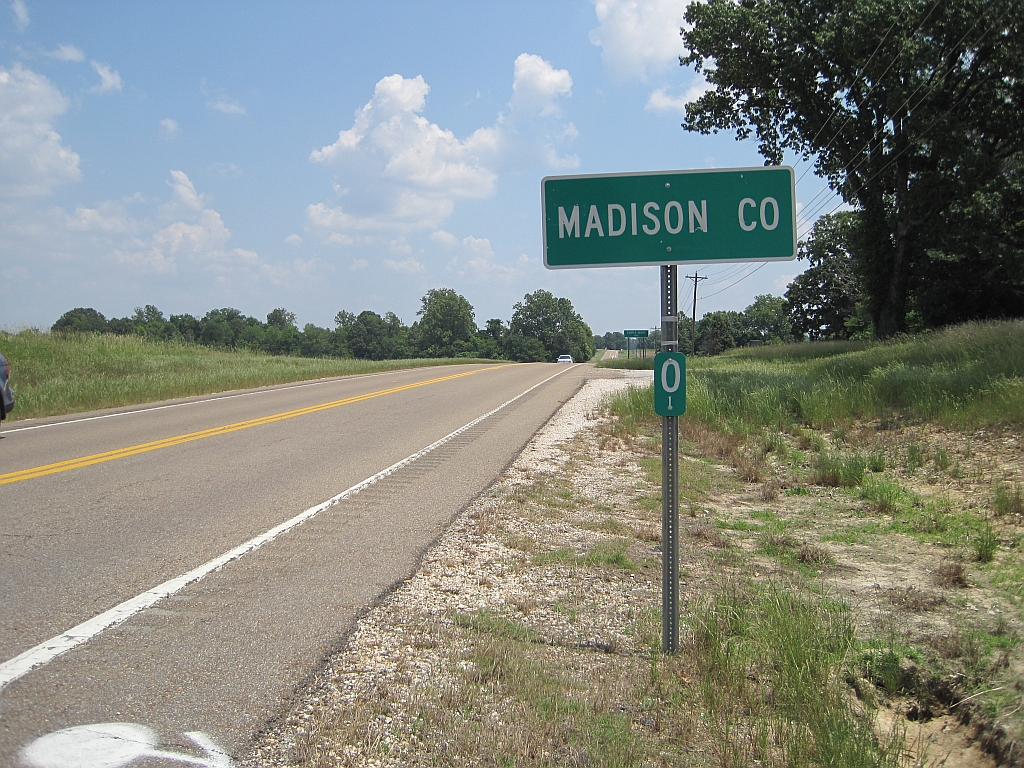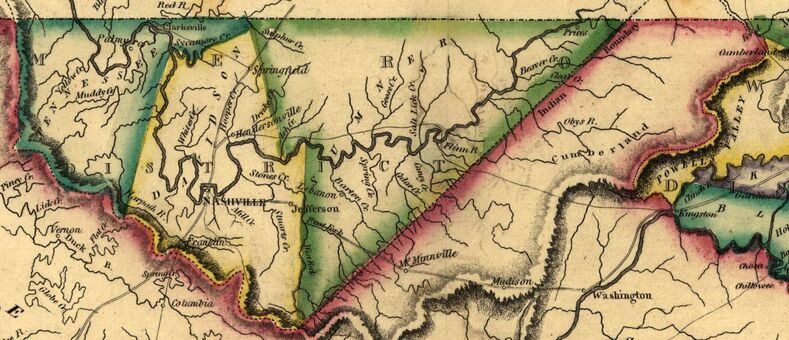|
Interstate 40 In Tennessee
Interstate 40 (I-40) is part of the Interstate Highway System that spans from Barstow, California, to Wilmington, North Carolina. In Tennessee, I-40 traverses the entirety of the state from west to east, from the Mississippi River at the Arkansas border to the northern base of the Great Smoky Mountains at the North Carolina border. At a length of , the Tennessee segment of I-40 is the longest of the eight states on the route, and the longest Interstate Highway in Tennessee. Sometimes known as "Tennessee's Main Street", I-40 passes through Tennessee's three largest cities— Memphis, Nashville, and Knoxville—and serves the Great Smoky Mountains National Park, the most visited national park in the United States. It crosses all of Tennessee's physiographical provinces and Grand Divisions—the Mississippi Embayment and Gulf Coastal Plain in West Tennessee, the Highland Rim and Nashville Basin in Middle Tennessee, and the Cumberland Plateau, Cumberland Mountains, R ... [...More Info...] [...Related Items...] OR: [Wikipedia] [Google] [Baidu] |
Federal Highway Administration
The Federal Highway Administration (FHWA) is a division of the United States Department of Transportation that specializes in highway transportation. The agency's major activities are grouped into two programs, the Federal-aid Highway Program and the Federal Lands Highway Program. Its role had previously been performed by the Office of Road Inquiry, Office of Public Roads and the Bureau of Public Roads. History Background The organization has several predecessor organizations and complicated history. The Office of Road Inquiry (ORI) was founded in 1893. In 1905, that organization's name was changed to the Office of Public Roads (OPR) which became a division of the United States Department of Agriculture. The name was changed again to the Bureau of Public Roads in 1915 and to the Public Roads Administration (PRA) in 1939. It was then shifted to the Federal Works Agency which was abolished in 1949 when its name reverted to Bureau of Public Roads under the Department of Comm ... [...More Info...] [...Related Items...] OR: [Wikipedia] [Google] [Baidu] |
Madison County, Tennessee
Madison County is a county located in the western part of the U.S. state of Tennessee. As of the 2020 census, the population was 98,823. Its county seat is Jackson. Madison County is included in the Jackson, TN Metropolitan Statistical Area. History Madison County was formed in 1821, and named for founding father and president, James Madison. The county was part of lands the United States purchased from the Chickasaw in 1818.Harbert Alexander"Madison County" ''Tennessee Encyclopedia of History and Culture''; retrieved October 22, 2013. After Congressional passage of the Indian Removal Act of 1830, most Chickasaw were forced out of the state and west to Indian Territory beyond the Mississippi River. Pinson Mounds, one of the largest Woodland period (c. 1-500CE) mound complexes in the United States, is located in Madison County. It has the second-tallest earthwork mound in the United States. Geography According to the U.S. Census Bureau, the county has a total area of , of ... [...More Info...] [...Related Items...] OR: [Wikipedia] [Google] [Baidu] |
Putnam County, Tennessee
Putnam County is a county located in the U.S. state of Tennessee. As of the 2020 census, the population was 79,854. Its county seat is Cookeville. Putnam County is part of the Cookeville, TN Micropolitan Statistical Area. History Putnam County is named in honor of Israel Putnam, who was a hero in the French and Indian War and a general in the American Revolutionary War. The county was initially established on February 2, 1842, when the Twenty-fourth Tennessee General Assembly enacted a measure creating the county from portions of Jackson, Overton, Fentress, and White counties. After the survey was completed by Mounce Gore, the Assembly instructed the commissioners to locate the county seat, to be called "Monticello," near the center of the county. Contending, however, that the formation of Putnam was illegal because it reduced their areas below constitutional limits, Overton and Jackson counties secured an injunction against its continued operation. Putnam officials failed ... [...More Info...] [...Related Items...] OR: [Wikipedia] [Google] [Baidu] |
Smith County, Tennessee
Smith County is a county in the U.S. state of Tennessee. As of the 2010 census, the population was 19,166. Smith County is located in the region of the state known as Middle Tennessee. Its county seat is Carthage. The county was organized in 1799 and is named for Daniel Smith, a Revolutionary War veteran who made the first map of Tennessee and served as a United States senator . Smith County is part of the Nashville-Davidson–Murfreesboro– Franklin, TN Metropolitan Statistical Area. History Smith County was established in 1799 from a portion of Sumner County, and was named for Daniel Smith, a U.S. Senator and former Secretary of the Southwest Territory. The location of the county seat was hotly contested between Bledsoesborough (near modern Dixon Springs) and William Walton's ferry and tavern at the confluence of the Caney Fork and the Cumberland River. In 1804, voters chose Walton's site, and a town, named Carthage, was platted the following year. Smith C ... [...More Info...] [...Related Items...] OR: [Wikipedia] [Google] [Baidu] |
Wilson County, Tennessee
Wilson County is a county in the U.S. state of Tennessee. It is in Middle Tennessee. As of the 2020 census, the population was 147,737. Its county seat is Lebanon. The largest city is Mt. Juliet. Wilson County is part of the Nashville-Davidson–Murfreesboro– Franklin, TN Metropolitan Statistical Area. History Wilson County was created in 1799 from a portion of Sumner County, and named for Major David Wilson, a Revolutionary War veteran and statesman.Frank Burns,Wilson County" ''Tennessee Encyclopedia of History and Culture''. Retrieved: 24 April 2013. The county remained predominantly agrarian throughout the 19th century. The arrival of the railroad after the Civil War boosted the county's timber sector, and several large factories were constructed in the county during the early 20th century. Wilson County was the site of an important saltpeter mine. Saltpeter, the main ingredient of gunpowder, was obtained by leaching the earth from Valley Cave. Valley Cave is ... [...More Info...] [...Related Items...] OR: [Wikipedia] [Google] [Baidu] |
Davidson County, Tennessee
Davidson County is a county in the U.S. state of Tennessee. It is located in the heart of Middle Tennessee. As of the 2020 census, the population was 715,884, making it the second most populous county in Tennessee. Its county seat is Nashville, the state capital and largest city. Since 1963, the city of Nashville and Davidson County have had a consolidated government called the "Metropolitan Government of Nashville and Davidson County", commonly referred to as "Metro Nashville" or "Metro". Davidson County has the largest population in the 13-county Nashville-Davidson–Murfreesboro– Franklin Metropolitan Statistical Area, the state's most populous metropolitan area. Nashville has always been the region's center of commerce, industry, transportation, and culture, but it did not become the capital of Tennessee until 1827 and did not gain permanent capital status until 1843. History Davidson County is the oldest county in the 41-county region of Middle Tennessee. It dates t ... [...More Info...] [...Related Items...] OR: [Wikipedia] [Google] [Baidu] |
Cheatham County, Tennessee
Cheatham County ( ) is a county located in the U.S. state of Tennessee. As of the 2020 census, the population was 41,072. Its county seat is Ashland City. Cheatham County is part of the Nashville-Davidson–Murfreesboro–Franklin, TN Metropolitan Statistical Area. It is located in Middle Tennessee. History Cheatham County was created by an Act of the Tennessee General Assembly in 1856, from lands formerly of Davidson, Dickson, Montgomery, and Robertson counties. Cheatham County was named for Edward Saunders Cheatham, a state legislator. Geography According to the U.S. Census Bureau, the county has a total area of , of which is land and (1.5%) is water. The county is bisected from northwest to southeast by the Cumberland River, with Ashland City located on its northern bank. The southern portion of the county is bisected from southeast to northwest by the Harpeth River, which meanders through generally hilly country, and along whose course are located the com ... [...More Info...] [...Related Items...] OR: [Wikipedia] [Google] [Baidu] |
Williamson County, Tennessee
Williamson County is a county in the U.S. state of Tennessee. As of the 2020 United States census, the population was 247,726. The county seat is Franklin, and the county is located in Middle Tennessee. The county is named after Hugh Williamson, a North Carolina politician who signed the U.S. Constitution. Adjusted for relative cost of living, Williamson County is one of the wealthiest counties in the United States. Williamson County is part of the Nashville-Davidson– Murfreesboro–Franklin, TN Metropolitan Statistical Area. In the 19th century, tobacco and hemp were cultivated here, and planters also raised blooded livestock, including horses and cattle. History Pre-Civil War The Tennessee General Assembly created Williamson County on October 26, 1799, from a portion of Davidson County. This territory had long been inhabited by at least five Native American cultures, including the Cherokee, Chickasaw, Choctaw, Creek, and Shawnee. It is home to two Mississippian-period ... [...More Info...] [...Related Items...] OR: [Wikipedia] [Google] [Baidu] |
Dickson County, Tennessee
Dickson County is a county located in the U.S. state of Tennessee. As of the 2020 census, the population was 54,315. Its county seat is Charlotte. Dickson County is part of the Nashville-Davidson–Murfreesboro–Franklin, TN Metropolitan Statistical Area. Dickson County is home to Tennessee's oldest courthouse in continuous use, built in 1835. This is the second courthouse in Charlotte as the first one, a log building, was destroyed in the Tornado of 1833, which destroyed all but one building on the courthouse square. History October 25, 1803 the Tennessee General Assembly passed a bill creating Dickson County, the 25th of Tennessee's 95 counties. It was formed from parts of Montgomery and Robertson counties, and was named for William Dickson, a Nashville physician then serving in the United States Congress. Dickson never lived in the county, but his relatives were prominent in its early development. Dickson was a close friend of President Andrew Jackson. General J ... [...More Info...] [...Related Items...] OR: [Wikipedia] [Google] [Baidu] |
Hickman County, Tennessee
Hickman County is a county located in the U.S. state of Tennessee. As of the 2020 Census, the population was 24,925. Its county seat is Centerville. Hickman County was part of the Nashville–Davidson–Murfreesboro–Franklin, TN Metropolitan Statistical Area but was removed in September 2018. History Hickman County was named for Edwin Hickman, an explorer and surveyor who was killed in an Indian attack at Defeated Creek in 1791. The county was established in 1807, and named for Hickman at the suggestion of Robert Weakley, a legislator who had been a member of Hickman's surveying party. The original county was vast, extending to the southern border of the state. Hickman County was reduced in extent when it partially contributed to the formations of four counties: Wayne and Lawrence Counties in 1817, Perry County in 1819, and Lewis County in 1843. Hickman and the Duck River valley was originally claimed by the Chickasaw people of western Tennessee and northern Mississi ... [...More Info...] [...Related Items...] OR: [Wikipedia] [Google] [Baidu] |
Humphreys County, Tennessee
Humphreys County is a county located in the western part of Middle Tennessee, in the U.S. state of Tennessee. As of the 2020 census, the population was 18,990. Its county seat is Waverly. History Humphreys County was established in 1809 from parts of Stewart County, and named for Parry Wayne Humphreys, a young Justice of the State Supreme Court, who was later elected as US Congressman from this area. The county seat was initially located at Reynoldsburg, near the mouth of Dry Creek. When the western half of the county was taken to form Benton County to the west in 1835, the seat of Humphreys was newly designated as Waverly, a town that was more centrally located in the redefined jurisdiction. During the Civil War, the Battle of Johnsonville was fought for two days in the western half of the county in November 1864. The remnants of the battle site are preserved and interpreted at Johnsonville State Historic Park. But much of the battlefield has been submerged by Kentucky ... [...More Info...] [...Related Items...] OR: [Wikipedia] [Google] [Baidu] |
Benton County, Tennessee
Benton County is a county located in the U.S. state of Tennessee. As of the 2020 census, the population was 15,864. Its county seat is Camden. The county was created in December 1835 and organized in 1836. Benton County is located in northwest Tennessee, bordering the western branch of the Tennessee River and 30 miles south of the Kentucky border. Aside from Camden, other major communities include agrarian communities Big Sandy and Holladay. It is known well in the area for its duck hunting and fishing industries, and in the past, was recognized for sorghum production, although it is no longer produced there. History Benton County was formed in 1835 from part of Humphreys County. It was named in honor of David Benton (1779–1860), who was an early settler in the county and a member of the Third Regiment, Tennessee Militia in the Creek War. Geography According to the U.S. Census Bureau, the county has a total area of , of which is land and (9.6%) is water. Adjacent ... [...More Info...] [...Related Items...] OR: [Wikipedia] [Google] [Baidu] |









